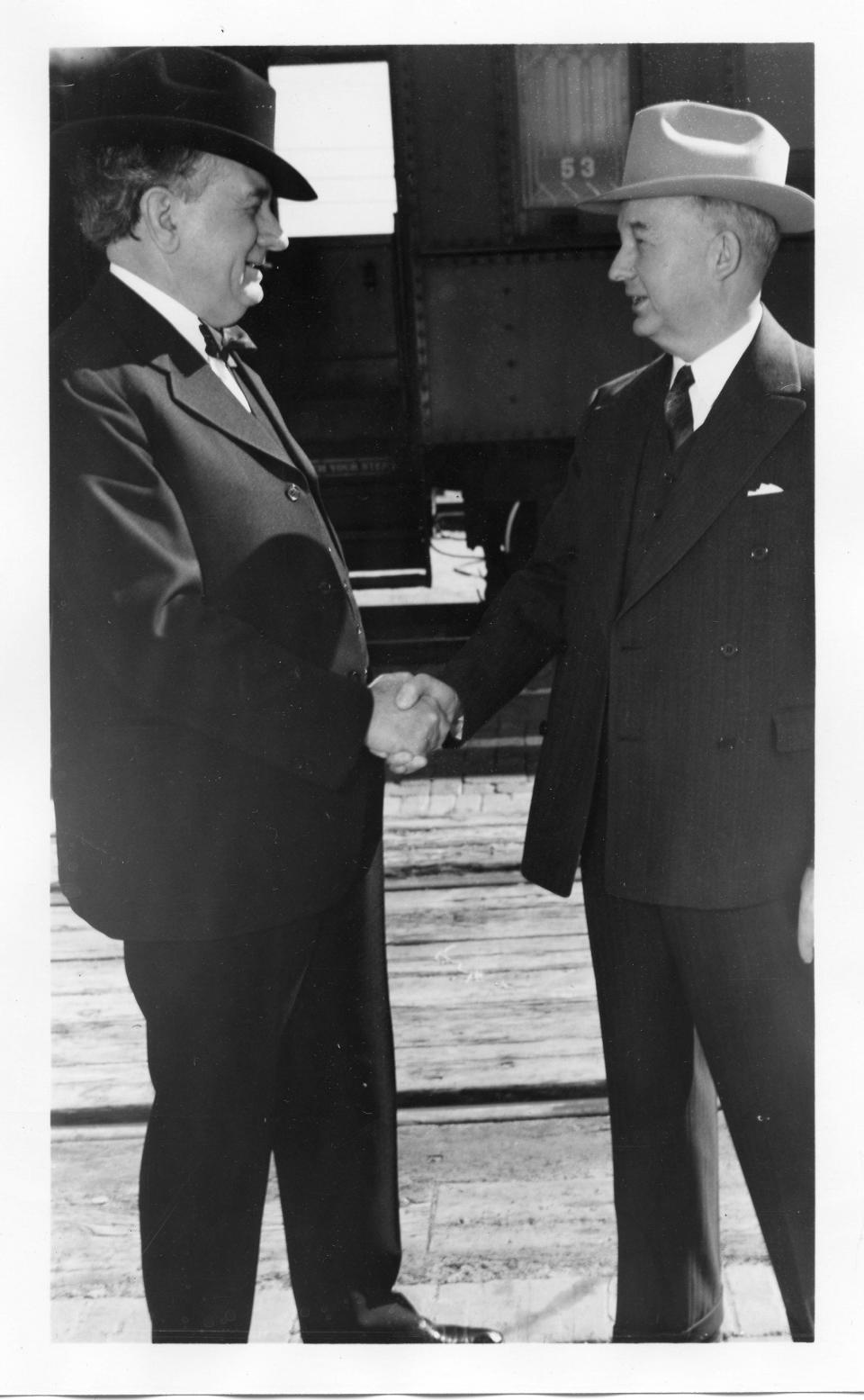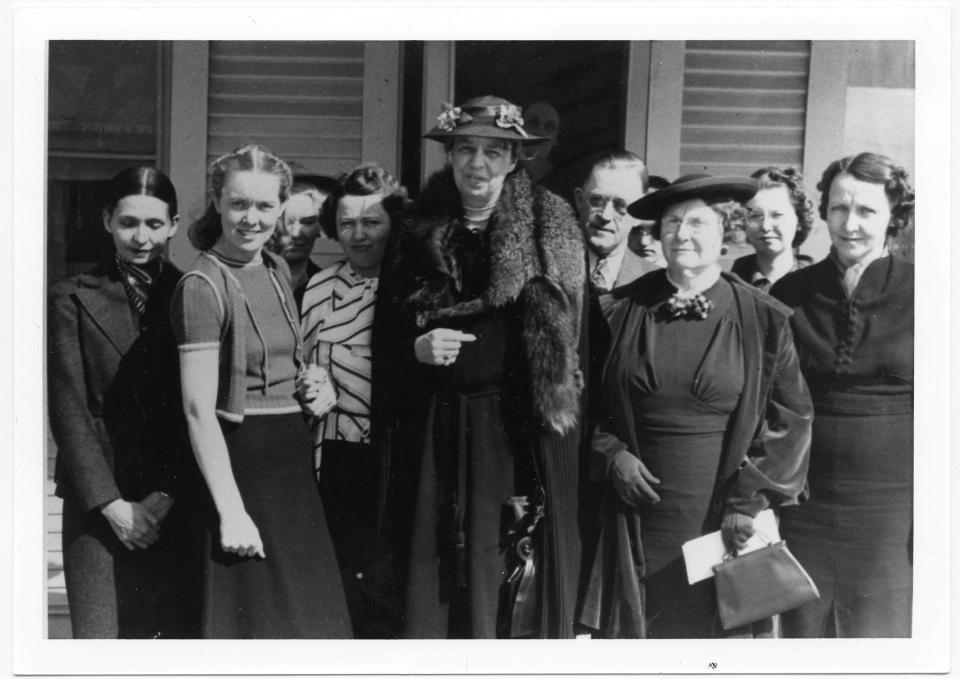Caprock Chronicles: New Deal in the Panhandle
- Oops!Something went wrong.Please try again later.
Editor’s Note: The Caprock chronicles are edited by Jack Becker, Librarian Emeritus, TTU Libraries. He can be reached at jack.becker@ttu.edu. Today’s article is by Marty Kuhlman, Ph. D., professor of History at WTAMU. He is a frequent contributor to this column.
The Great Depression had a devastating impact on the nation. Drought and low agricultural prices increased the suffering in the Texas Panhandle. The federal government mediated the situation with New Deal policies, but local officials had to step in to make sure the region received its fair share of benefits.
One way to help the destitute in a county would be for the federal and state governments to pay for the labor to build a road. The county would gain a needed road while employing the locally unemployed.
In Randall County, there was the need for a highway to be built from Canyon east to Palo Duro Canyon. The road would open up a tourist destination, and jobs to build the road would provided income to men in need. Panhandle officials pushed for this road and others to be built.
Congressman Marvin Jones of Amarillo met with a number of federal leaders such as federal relief administrator Harry L. Hopkins and Secretary of the Interior Harold Ickes arguing for his constituents. Jones met with President Franklin Roosevelt 20 times between March 1933 and June 1935.

Congressman Jones continued to make sure his constituents weren’t forgotten. A 1933 meeting in Amarillo between Jones, Thomas McDonald, the director of the Federal Bureau of Public Roads, and Hopkins led to a roads program, which included the highway to Palo Duro Canyon.
As part of a relief project for Midwestern states, President Roosevelt included $5 million for the 17 drought-stricken Texas Panhandle counties. Unemployed people would work on the roads and receive wages of between 35 and 75 cents per hour.
Hopkins, however, balked at the amount believing that the Texas Panhandle had received too much relief already and that the state had not done its share to fund relief.
Jones became incensed at the “outrageous situation” and sent a “stinging” telegram to Hopkins and other officials. He sent a milder one to Roosevelt explaining that the elimination of work relief would lead to people going on the dole, which no one wanted.
The President assured Jones the “misunderstanding” would be cleared up. The Civilian Works Administration (CWA) took over the projects and more jobs opened up.
But it was not long until the federal government began to phase out the CWA. Thirty-seven thousand letters appeared at the White House to protest elimination of the New Deal agency.
The Panhandle joined the protests when Amarillo Mayor Ross D. Rogers called for a meeting of concerned citizens. On Feb. 22, 1934, over 400 representatives of 22 Panhandle counties met in the Amarillo Municipal Auditorium.

The delegates agreed when Dumas Mayor Neil McDavid said, “If there is no CWA, there will not only be distress but starvation.”
Mayor Rodgers proclaimed that usually he did not support involvement of the federal government in the economy but stressed that the “existing conditions” justified asking for aid.
The protesters sent a resolution calling for continuation of the CWA to Roosevelt, Texas Gov. Miriam Ferguson, and every member of the state and national legislatures. Consequently, FDR extend the CWA for a few more months.
But, Hopkins continued to drag his feet. He announced that before giving relief, the Department of Agriculture would investigate the Panhandle counties to find if relief was “necessary.” An editorial in the Amarillo Daily News asked, “Where’s Hopkins Been for Three Years” while the region suffered from a drought and labeled him a “disgrace to the nation.”
Mayor Rogers coordinated another protest meeting at the Amarillo Municipal Auditorium in which 500 participated. There was even the suggestion of a ‘drought march’ on Washington, D. C. in the fashion of the Bonus Army march in 1932.
Instead, the meeting sent a delegation of six - three county relief officers and three representatives of the West Texas Chamber of Commerce - to meet with Hopkins. Following the meeting, an agreement to give work relief to 23 drought-stricken counties in the Panhandle allowed road work to continue.
But when another 169 counties in Texas were added to the list of drought-stricken counties, the same funds now had to stretch between 192 counties. This action led to another formal protest -- not only to the federal government but also the state.
The vast majority of relief came from the federal government, but each state was expected to contribute as well. County officials urged the state to do more.
The Randall County Commissioners Court sent the State Relief Commission a resolution stating that the county’s resources were “exhausted” and “that people will suffer if more relief funds are not furnished.”
Soon afterward, in September 1934, the state legislature passed to issue over $6 million in bonds, which helped fund highway projects in the Panhandle. Work on the road from Canyon to Palo Duro continued, and it became a state highway in June of 1935.
As the Depression continued funds for work-relief projects funded by the state and federal government continued to flow into the Panhandle, but as local officials found out, they had to work hard so the drought-stricken Panhandle received its fair share of state and federal funding.
This article originally appeared on Lubbock Avalanche-Journal: Caprock Chronicles: New Deal in the Panhandle

